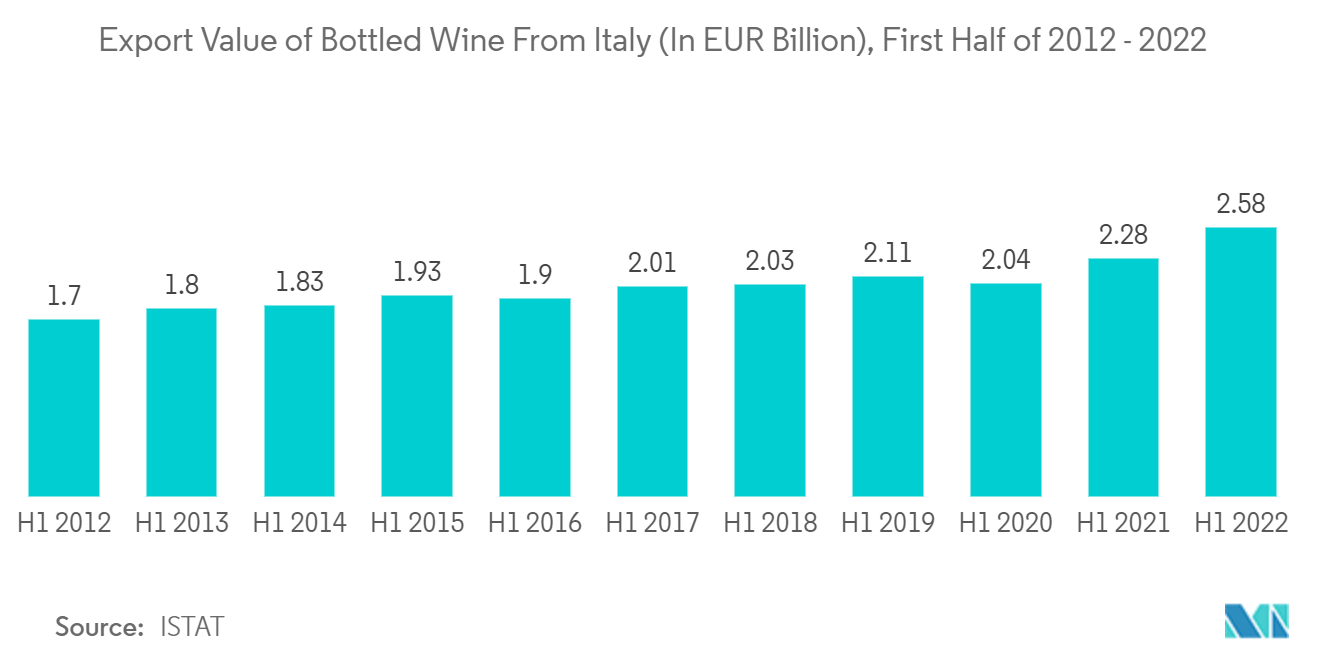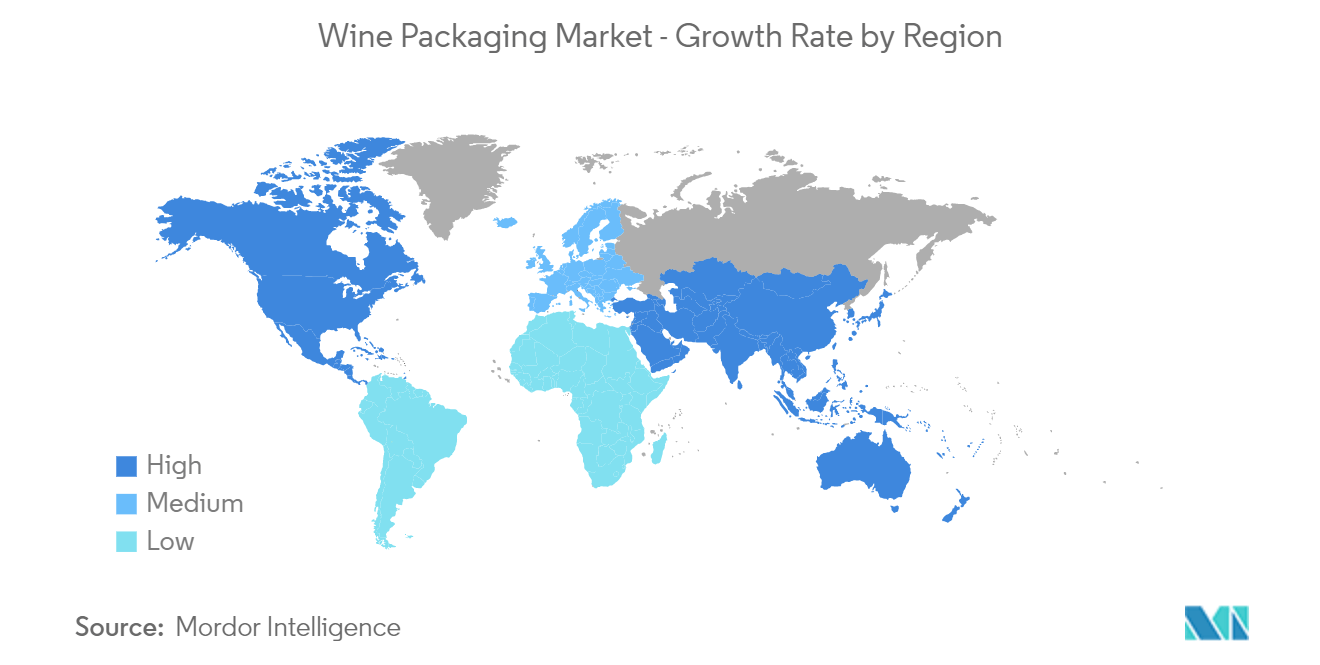Market Trends of Wine Packaging Industry
This section covers the major market trends shaping the Wine Packaging Market according to our research experts:
Growing Consumption of Premium Wines
- Alcoholic beverages dominate the glass bottles segment in the United States. A high percentage of distilled spirits and wines are packaged using glass containers, while in the beer segment, the rate of glass containers decreased significantly.
- Also, the export value of bottled wine from Italy increased significantly between the first quarter of 2012 to the first quarter of 2022. After facing a decline slightly in 2020, the value of bottled wine exports returned to growth. It reached nearly EUR 2.6 billion (~USD 2.74 billion) in the first half of 2022, compared to EUR 1.7 billion (~USD 1.80 billion) in the first half of 2012, according to ISTAT. The growing export is expected to support the demand for the wine packaging market.
- Alternative packaging has already seen a growing interest for several reasons, such as lighter materials, easier to ship, less likely to break, and still offering a bit of novelty for consumers. This creates an opportunity for recyclable plastic and aluminum to enter the market.
- Additionally, the factor affecting the price of wine is the glass bottle. Reasons behind these broad price increases are equally diverse things such as labor issues, shipping issues, and since Russia's invasion of Ukraine, fuel costs. Not only does shipping heavy wine bottles require more fuel, but they're also energy-intensive. With oil prices reportedly up as much as 70% in the past year, wine manufacturers are looking for other packaging solutions for wine, such as Cans. For instance, in October 2021, Ball Corporation Argentina and Mosquita muerta wines presented Argentina's first canned sparkling wine.

North America to Account for a Major Share
- Premiumization of wines in the United States is nearing maturity, and wine manufacturers are looking towards consumers that use the wine regularly instead of an occasional drink to toast. In addition, advances are spurred by surging disposable personal incomes and changing alcoholic beverage preferences among younger consumers. These changes include the preference for wine over beer among boomers and a larger share of boomers consuming wine daily than in other age groups. Also, according to Wine Institute, the Average wine consumption per United States resident has increased from 2.82 gallons in 2014 to 3.18 gallons in 2021.
- Millennial and boomer demographics are already impacting the wine market, which has thrust the wine packaging market to look for new solutions. For instance, according to Silicon Valley Bank, the wine sales share of millennials in the United States was 19.8% compared to boomers, which was 47.3% in 2021. Also, to meet the demand from the US winemakers and other newcomers in the flourishing organic market, companies like Gallo Glass are investing in their facilities to service the Californian wine industry, which continues to grow steadily, and currently accounts for roughly 81% of the country's wine.
- Due to the attractive wine market in the United States and the efforts made by the government to manufacture locally, local wine packaging providers are providing product innovations to attract customers. For instance, Ardagh Group is innovating its products, including options like its ECO Series collection, which achieves the same standards of technical and aesthetic quality as traditional bottles while resulting in transportation savings for wineries.
- Moreover, the wine packaging is also supported by the growing sales of wine in Canada. According to StatCan, approximately 537.41 million liters of wine were sold in Canada in 2021, which increased from 527 million liters in 2020.


